
As an individualistic country that’s home to people of numerous cultures, the United States has not one cultural identity, but many.
Learning about American culture, values, and lifestyle is a great way to immerse yourself in the English language. Whether you’re just curious about what life in the United States looks like, or you plan on moving to the country soon, the information in this article will help you better understand what to expect.
You’ll learn about a variety of topics, from religion to food, and walk away with a clearer image of the American culture basics.
Let’s get started.
 Table of Contents
Table of Contents
- Values and Beliefs
- Religion in the United States
- What is an American Family?
- American Work Culture
- Art: The Gateway to Self-Expression
- Food
- Traditional Holidays
- Final Thoughts
1. Values and Beliefs
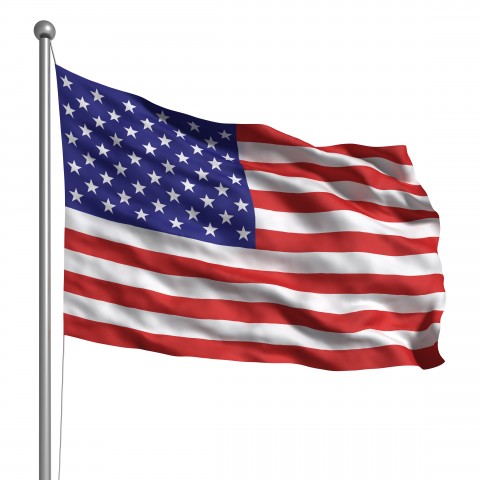
Every country was built upon values and beliefs that define it. There are many values that Americans hold near to their hearts, so, here, I’ll outline the most prevalent ones.
Keep in mind that while these are American ideals, the United States is a melting pot of cultures, religions, and ideologies. As such, these basic values of American culture may be experienced differently from person to person.
| Individualism | Americans take pride in being unique individuals. In addition, we tend to focus our attention on personal happiness and satisfaction, as opposed to what’s better for others. |
| Independence | This applies to the country as a whole, and to individual Americans. As a country, America strives to be independent from other countries; as a people, Americans value independence in other areas of life (such as caring for one’s own needs). |
| Democracy | Democracy is a cornerstone of American culture. In a democracy, people vote for representatives who will work for the people. In our democracy, everyone over the age of eighteen is allowed to vote, and the majority wins. |
| Justice | Justice means that people get what they deserve. If someone does good, they should be rewarded. If they do wrong or commit a crime, they should be punished according to that injustice or crime. |
| Equality | Though America has had a rocky past in terms of equality, this is a value that’s becoming more and more prevalent in the country. We believe that every person, regardless of race, sex, age, or any other factor, should be treated with the same dignity and respect as anyone else. |
| Competition | Americans are very competitive. Our schools and workplaces are practically built around competition, with those who work the hardest, get the best grades, and put in the most time, are rewarded with honors or higher positions. |
| Capitalism | Capitalism is an economic system that promotes personal wealth accumulation, the owning of private property, and an individual’s ability to attain more wealth and belongings. |
| Youth | In the United States, it seems that everyone is obsessed with youth—that is, the ability to look and feel young and healthy. Some people spend a lot of money on makeup, lotions, medications, cosmetic surgeries, and special foods or vitamins that they think will help them achieve this. |
| Self-expression | This is sort of a step further than individualism. Americans, especially the younger generations, think of self-expression as a thing to be cherished and taken full advantage of. They often express themselves through the clothes they wear and the opinions they give. |
Want to learn more about American culture and society? See our lesson on the Top Five Things You Need to Know About American Society.
2. Religion in the United States

The United States is a country founded on the principle of religious freedom. This gives U.S. citizens the freedom to believe any religion (or no religion) and to worship according to their beliefs. As such, the United States doesn’t identify with a single religion, and you’ll find people of just about any religion here!
That said, Christianity is the most prominent religion in the United States. Just under half of U.S. citizens identify as Protestant Christians, and around twenty percent identify as Catholic. There are also plenty of Christians who don’t identify with a single denomination (non-denominational) or who belong to a smaller subset of Christianity.
Because the United States is such a melting pot of peoples and cultures, there are also many people who identify as Hindu, Buddhist, Jewish, Islamic, Mormon, and a handful of other religions.
Lately, there’s been a growing trend toward atheism (no belief in a god or gods) and agnosticism (the doubt that a god or gods exist). This is especially true of the younger generations, generally those under the age of thirty.
In American culture, religion is a common topic of discussion and many people see their religion as part of their identity. You can read more about the religious demographics of the United States on WorldAtlas.com.
3. What is an American Family?
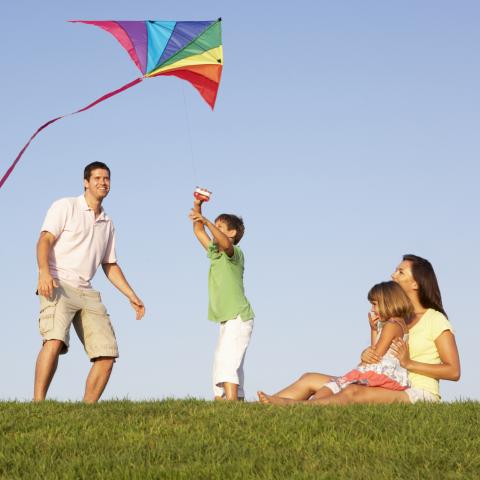
The average nuclear family.
Over the years, what a “typical” family looks like has evolved. Several decades ago, the average family was labeled the “nuclear family,” consisting of a father, a mother, and their children.
Recently, there are more and more families across the United States that don’t look like this. This is due to a number of factors, including:
- Higher divorce rates
- Fewer couples having children (or having fewer children)
- An increase in single-parenting (where one mother or one father raises their children alone)
In light of these changes, there’s also been an increasing trend toward “step families.” This happens when a couple with children divorces, and one or both of the divorced parents remarries. Children in situations like this receive a “stepparent” (the new spouse of their biological parent), as well as step-siblings (if the new spouse also had children from a previous relationship).
In addition, the United States is becoming more and more open to what families, romantic relationships, and marriages should look like:
- Many couples in the U.S. choose to live together before they marry.
- Some couples choose not to marry at all.
- LGBTQ marriages and civil unions are largely accepted in thirty-seven states.
In the United States, gender roles are quite flexible, and becoming even more flexible over time. There are plenty of working women and men who stay at home to take care of the children (though the latter is less common). In many households, both the man and woman work.
Children in the U.S. are expected to attend school. The ages that a child must attend school varies from one state to another, but it’s generally from the ages of seven to eighteen. Educational opportunities vary. Most children attend public or private schools. Some private schools have a religious affiliation, but not all. Some children are even homeschooled (taught at home, usually by a parent), although specific regulations regarding home schooling vary from state to state.
- → If you want to learn more, read my blog post about U.S. families and visit our free vocabulary list of Must-Know Terms for Family Members.
4. American Work Culture

There’s no single type of work atmosphere in the United States, though most companies and workplaces do share a few things in common:
- There’s generally a clear structure of hierarchy.
- It’s important to be punctual for all work-related activities.
- Formality levels and dress codes vary greatly depending on the company/workplace.
Americans often feel that their job should be fulfilling, and many also believe that their work defines who they are. Perhaps this is why many Americans, especially the younger generations, tend to change jobs often.
In addition, many Americans feel the need for achievement and competition in their work. The American workplace practically revolves around competition, especially in larger companies. Coworkers may try to outdo each other in work performance or put in extra hours to impress their superiors. This is usually done in hopes of getting a promotion or a raise in their salary.
But despite the competitive nature of work in the United States, most Americans agree that work isn’t everything. We definitely enjoy our time off! Whether this means going out with friends after a long day, staying at home with a glass of wine in the evening, or planning fun weekend activities with family, Americans highly value relaxation and entertainment.
That said, the United States is surprisingly behind the rest of the world in terms of vacation days and paid time off. Only three-quarters of employers offer their employees vacation days, and those that do, don’t offer nearly as many as employers in other countries do! Generally, American workers are allowed more days off per year the more years they’ve worked at a particular company (starting with ten days off after one year).
- → Are you moving to the United States for work? Read my article on How to Find a Job in the United States, and learn how to talk about your occupation with our Jobs / Work vocabulary list.
5. Art: The Gateway to Self-Expression
Perhaps due to our love of self-expression, Americans tend to enjoy many different types of art. Here, I’ll outline what you should know about various artforms in the United States.
A- Painting

In the eighteenth century, paintings in colonial America were largely influenced by British painters and aesthetics. During this time, most artists were self-taught and their work usually illustrated historical and religious subjects.
Painters in the nineteenth century began focusing more on rural scenes as the United States underwent exploration and expansion. In the later years of this century, American artists received influence from French artists, particularly in the form of Impressionism.
The twentieth century saw Realism and controversy find its way into American paintings. At this point in time, American artists began to turn their back on what was considered the “right” way of making art, and individuality began to emerge during this era’s paintings. One of the most famous paintings from this time is called American Gothic by Grant Wood. This century was also a time of growth and change in the country itself, and made way for abstract art and art by African Americans.
Today, there’s no one style of art that’s considered the best or most popular. This falls in line with the American culture of individualism, and is thought to be the result of cultural pluralism.
You can read a more detailed review of art in the United States on Wikipedia.
B- Literature

The United States has a rich literary history, and it’s become a melting pot of literary styles, tastes, and voices. I can’t cover everything, but I’ll outline the basics for you.
Most Famous American Writers of the Past
| Most Famous Works | Additional Notes | |
| Benjamin Franklin (1706-1790) | Poor Richard’s Almanack Father Abraham’s Sermon The Way to Wealth | He often wrote under the pseudonym Richard Saunders. Many popular modern-day adages are attributed to him. |
| Edgar Allen Poe (1809-1849) | The Raven The Tell-Tale Heart The Fall of the House of Usher | He wrote mostly poetry and short stories. Poe is known for his dark, psychological, and often grotesque writing style and themes. |
| Ralph Waldo Emerson (1803-1882) | Divinity School Address | Emerson is known for his strong transcendental themes and philosophies. |
| Mark Twain (Samuel Clemens) (1835-1910) | Old Times on the Mississippi The Adventures of Tom Sawyer The Adventures of Huckleberry Finn | His real name was Samuel Clemens, but he wrote under the pseudonym Mark Twain. Twain’s work was both highly controversial and well-admired. He often used elements of humor in his writings about darker topics. |
| Ernest Hemingway (1899-1961) | The Old Man and the Sea The Sun Also Rises A Farewell to Arms | Hemingway wrote using a style he coined the “iceberg theory.” Much of his writing focused on naturalism and gender issues. |
| F. Scott Fitzgerald (1896-1940) | The Great Gatsby This Side of Paradise Tender is the Night | Fitzgerald’s work largely covered the Jazz Age of the U.S. Many people call his book, The Great Gatsby, “The Great American Novel.” |
| John Steinbeck (1902-1968) | Of Mice and Men The Grapes of Wrath Tortilla Flat | Steinbeck won a Nobel Prize in 1962. His work has been described as “imaginative” and “socially perceptive.” |
| Harper Lee (1926-2016) | To Kill a Mockingbird Go Set a Watchman | Lee won the Pulitzer Prize for her novel To Kill a Mockingbird in 1961. In 2015, the novel’s sequel Go Set a Watchman was published. Later, it was found to actually be the first draft of To Kill a Mockingbird. |
Famous Poets
| Most Famous Works | Additional Notes | |
| Henry Wadsworth Longfellow (1807-1882) | Paul Revere’s Ride The Song of Hiawatha Evangeline The Courtship of Miles Standish | Longfellow was a member of The Fireside Poets, a group of poets who gained much popularity and associated themselves with New England. He translated Divine Comedy by Dante Alighieri. His poetry was both lyrical and versatile. |
| Emily Dickinson (1830-1886) | The Poems of Emily Dickinson (poetry collection, 1955) | Most of Dickinson’s work wasn’t published until after her death. Her poetry often employed the use of dashes and capital letters. Much of her work focused on the concept of death. |
| Walt Whitman (1819-1892) | Leaves of Grass (poetry collection, 1855) Song of Myself | Whitman was known for writing very sensual poetry. Much of his work employed free verse and cadence. Leaves of Grass wasn’t published until after his death, because he revised it continuously until then. |
American Literature Today
In the United States, reading tastes vary greatly from person to person. A few popular genres include:
- Mystery / Crime
- Sci-fi / Fantasy
- Horror
- Romance
- Historical Fiction
- Action / Adventure
- Classic Literature
Popular names today include Stephen King, James Patterson, J.K. Rowling, Ray Bradbury, Danielle Steel, Dean Koontz, and Nora Roberts. And you can’t forget the fantasy giants J.R.R. Tolkien and C.S. Lewis, whose works are much-beloved even today.
C- Music

Like in its other artistic endeavors, American music is not bound by a single element or genre. Globalization has added to the United States’s melting pot of musical styles, and one can find just about any type of music being played on the radio, on music streaming sites, or even on the streets.
Some of the most popular music genres in the United States include:
- Rock
- Classic Rock
- Pop
- Country
- Rap
- Hip-Hop
Other genres include, but are not limited to:
- Folk
- Metal
- Classical
- Opera
- Blues
- Reggae
- Indie/Alt Rock
- Jazz
It’s not uncommon to find today’s artists mixing different musical genres to create more unique sounds, and to better express a point they’re trying to make or feelings they want to express.
In the U.S., younger generations have also developed quite a liking for K-Pop music, and other types of music from other cultures!
D- Architecture
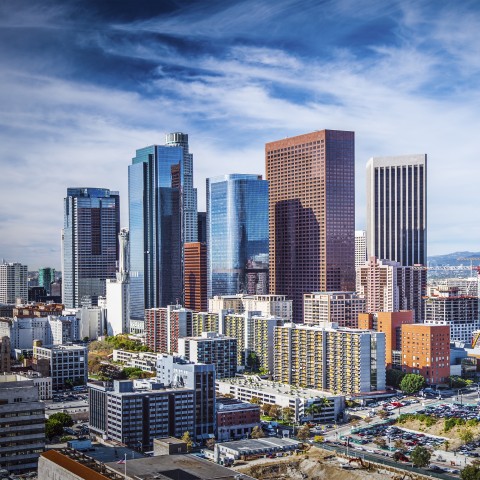
American architecture tends to be innovative, and there’s no one style that defines it.
Our architecture draws influence from a number of other cultures and time periods, most notably European, English, Spanish, and Greek.
Perhaps above all else, the United States is known for creating the first skyscraper. This building was called the Home Insurance Building, and it was built in Chicago in the mid-1880s. At 138 feet tall, this building led the way for the creation of even taller, more impressive skyscrapers in the United States and around the world.
Some famous buildings in the United States include:
You can read more about these buildings and their creators on MentalFloss.com!
E- Body Art / Self-Expression

Self-expression and individuality are core characteristics of American culture. Today, many people—especially the younger generations—tend to express their individuality through body art.
Body art is a fairly vague term, but it refers to using one’s body as a way of reflecting who they are and what they feel. Tattoos, body piercings, hairstyles and colors, and clothing choices are just a handful of ways that Americans typically do this.
The concept of body art has become so popular in the United States that there are even body art competitions on TV!
A cultural tip: If you’ve never been to the United States before, and you’re from a culture that doesn’t prioritize individualism in the same way the US does, you may experience some culture shock. And that’s okay. Just remember that in the United States, it’s generally considered rude to stare, point, or call someone out for dressing or looking a certain way.
6. Food
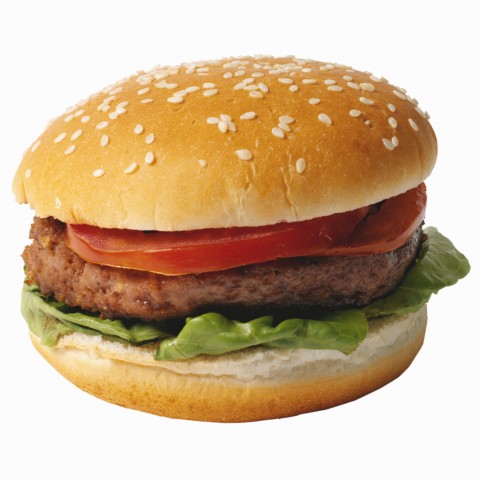
Like every other aspect of U.S. culture, our cuisine consists of elements from a variety of cultures and countries. A lot of our foods are dishes that have been adapted from other cultures, or “Americanized.”
One notable feature of American food culture is our love for fast food! Americans tend to keep busy and don’t like “wasting” time waiting on food to be prepared (or cooking it themselves), especially around lunchtime. Whether grabbing a breakfast burrito through the McDonald’s drive-thru before work, heading to Burger King for a quick lunch, or getting a Popeye’s chicken sandwich over the weekend, you can see Americans going through drive-thrus all day, every day! It’s cheap, fast, and addicting.
Perhaps the only thing we love more than a quick bite to eat is actually sitting down in a nice restaurant and having someone cook for us. This is a bit pricier, but the quality and dining experience are worth it! 😉
Of course, it’s still fairly common for families and individuals to cook and eat at home, especially for dinner on weekdays.
Some of the most popular American foods include burgers, hot dogs, apple pie, and chocolate chip cookies. Many Americans also enjoy a variety of drinks and beverages with their meals; some of the most popular options are soft drinks, fruit juices or other fruit-flavored drinks, and alcoholic beverages (wine and beer, especially). In the morning, many Americans love a cup (or seven) of coffee, and some people consume milk or other dairy products with breakfast as well.
You can read more detailed information about current U.S. eating trends on this official government website.
- → I recently wrote an article all about popular foods in the United States, so do check it out for more info on American food culture!
- → Short on time? See our vocabulary lists on Famous U.S. Foods, Top 10 Foods That Will Make You Live Longer, and Top 10 Foods That Will Kill You Faster.
7. Traditional Holidays
In the United States, we celebrate lots of holidays, both religious and non-religious.
A- Religious
As mentioned earlier, most Americans identify as Christian, so two of our biggest holidays are associated with Christianity. These are Christmas and Easter, both of which are also celebrated secularly.
Christmas

Christians celebrate Christmas as the day that Jesus was born. Popular activities include going to a Christmas Eve service the evening before, reading Bible stories associated with Jesus’s birth, and giving gifts to family members and other loved ones.
In addition, many families will put up a Christmas tree in their home a couple of weeks before the holiday and decorate it with ornaments, tensile, and sometimes a star or angel on top. Around Christmastime, you can expect to see people’s yards decorated with things like inflatable snowmen and Christmas lights. All of the radio stations will play nonstop Christmas music and carols, and companies do a lot of marketing around this time.
Most U.S. children are told the story of Santa Claus, and they wait all year long to receive presents from him on Christmas Day (if they’ve been good all year, that is).
Many families will have a special Christmas dinner, prepare seasonal desserts, and invite extended family over to celebrate the holiday together.
- → See our free vocabulary lists of Must-Know Christmas Day Vocabulary and the Top 10 Christmas Characters in American Culture.
Easter

Easter is celebrated as the day that Jesus was resurrected three days after his crucifixion. It’s common for there to be a sunrise service on this day, during which Christians hold a service outdoors, sing worship songs, and read Bible passages related to Jesus’s resurrection.
For some, Easter is strictly a religious holiday. For others, Easter is celebrated separately from specific religious practice.
Other activities include painting eggs, putting candy or money inside of plastic eggs and hiding them for children to find, and simply enjoying the spring weather.
The Easter Bunny is a fictional character associated with Easter, and children believe that this character is the one who hides the eggs.
- → You can find more-detailed information on this holiday in our article titled How to Celebrate Easter Sunday in the United States!
B- Non-Religious
There are plenty of non-religious and secular holidays in the United States as well. These include, but aren’t limited to:
Halloween (October 31)
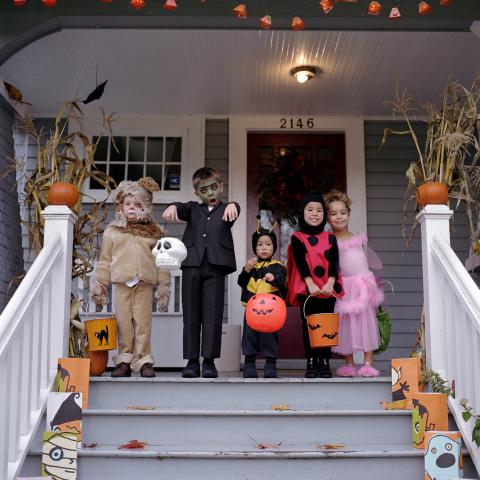
Halloween originates from a pagan holiday that used to take place around the same time.
On this day, many children dress up in costumes (usually scary, but sometimes cute or ones that look like a favorite superhero/character). On Halloween night, they walk around their neighborhood, knock on people’s doors, and say “Trick or Treat” to get candy or small toys.
People like to decorate their homes and yards with things that are spooky, such as fake spiderwebs, jack-o-lanterns, and witches or zombies that can talk and move. Oftentimes, local community centers or libraries will hold special Halloween events for kids and adults.
- → Read more about what to expect on Halloween in our blog post.
Independence Day (July 4)
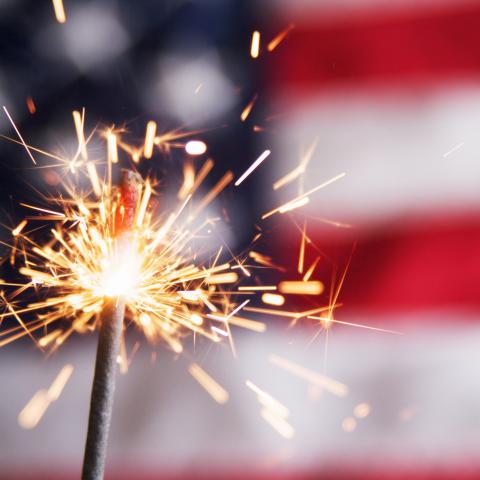
This is the date in 1776 that the United States gained independence from Great Britain.
Americans often celebrate this day by hanging the American Flag, having barbeques with friends and family, and watching firework displays that night. In some places, people are allowed to buy their own fireworks to set off, in addition to sparklers and similar products.
- → Learn more about the Fourth of July in this blog post, and pick up some relevant vocab while you’re at it!
Thanksgiving (Fourth Thursday of November)
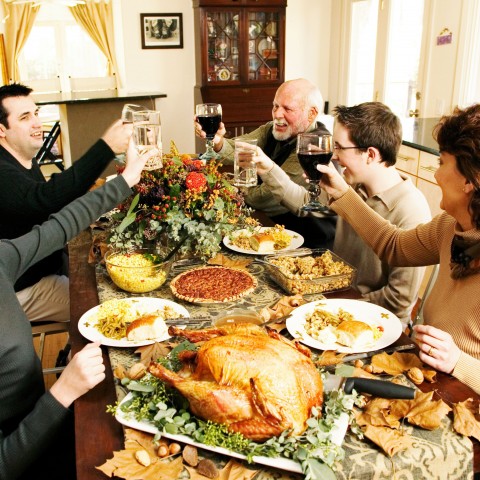
On Thanksgiving, Americans are encouraged to be grateful for what they have.
On this day, Americans prepare a large Thanksgiving dinner and eat with family or friends. Sometimes, families with young children will have everyone at the table take turns saying what they’re most grateful for.
New Year’s Eve (December 31)

On New Year’s Eve, Americans prepare for the New Year.
We stay up late that night, until midnight or later, usually at a special New Year’s party or with family. Americans often indulge in champagne and other alcoholic beverages to celebrate, and the celebrations reach their peak right at midnight.
In New York, many people gather to watch the famous Ball Drop (and people who couldn’t make it to New York may watch it on the television).
- → See our article Celebrating New Year’s Eve in the United States to learn more about this exciting, upbeat holiday.
Memorial Day (Last Monday of May)
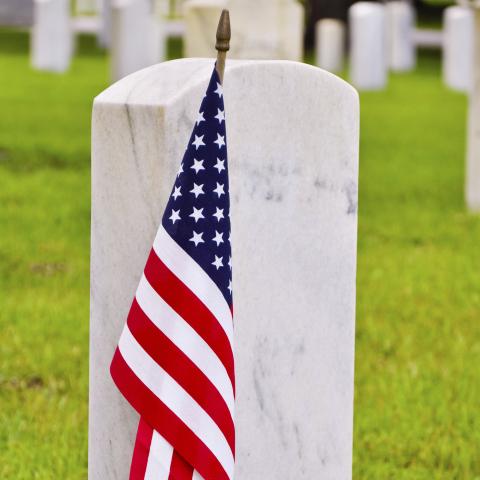
On Memorial Day, Americans remember those who lost their lives in service to their country.
Many people visit the graves of loved ones who have died, and place flowers on or around their tombstone. In addition, families may gather together in remembrance of departed loved ones, and there are honorary parades in some cities.
Super Bowl Sunday (Early February)
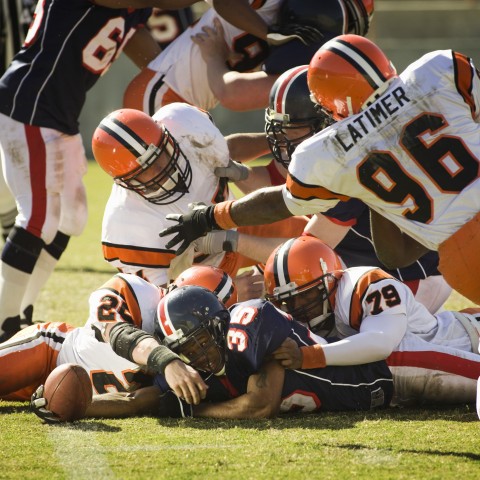
Super Bowl Sunday is all about American football!
This is when the NFL (National Football League) holds its annual championship football game. On this day, family and friends often get together at home to watch the game on TV. People eat on this day like they do on Thanksgiving! Popular foods on Superbowl Sunday include buffalo wings, chips and dip (especially guacamole), nachos, beer, and soft drinks.
8. Final Thoughts
American culture and traditions are not easily defined, as you can probably tell by now. Due to the strong presence of individualism, every person you encounter will have their own set of values, beliefs, preferences, and experiences.
How does American culture compare to your country? Share your thoughts with us in the comments, and see what your fellow English-learners have to say!
We only scratched the surface here, and there’s a lot more to learn about American culture and lifestyle. Luckily, EnglishClass101.com caters to your curiosity with hundreds of fun, accessible lessons. Create your free lifetime account today, and start learning English like never before with our audio and video lessons, free vocabulary lists, and insightful blog posts like this one.
We hope to see you around. 😉










